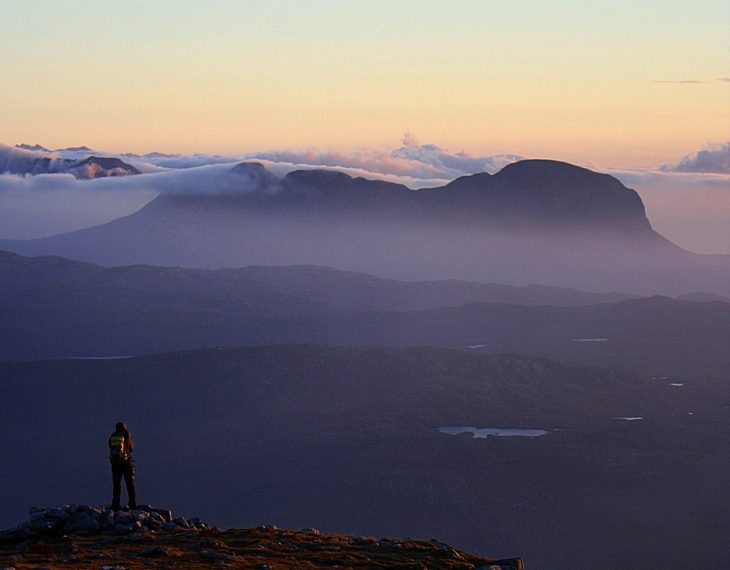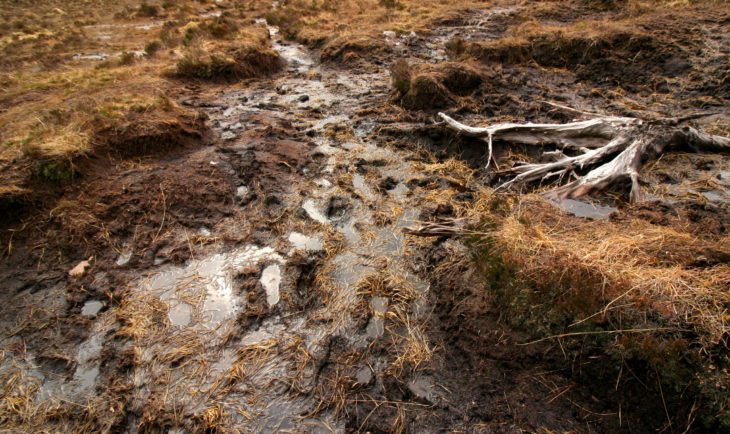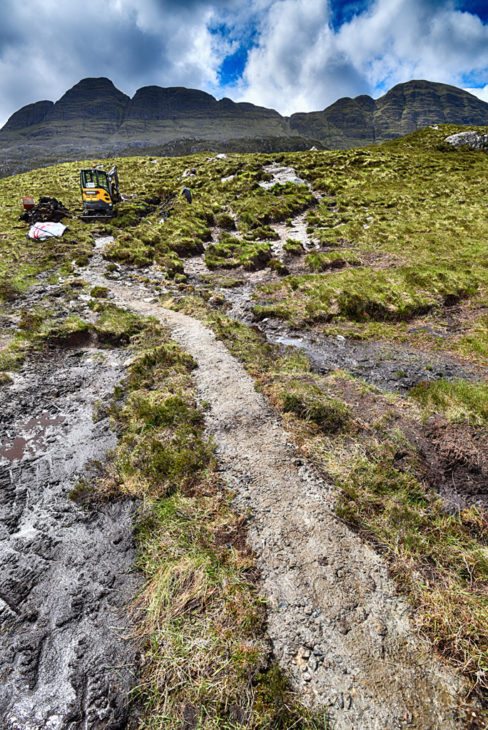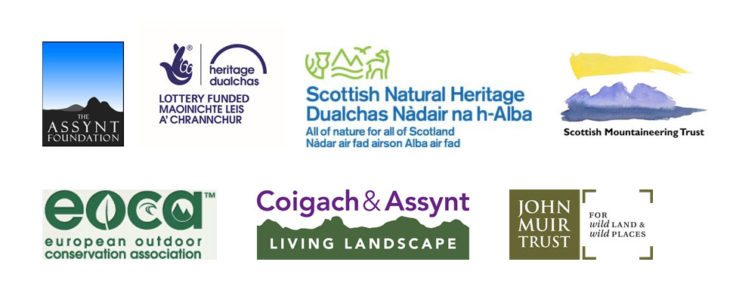Footprints
,
Guest blog by Mandy Haggith, Director of Assynt Foundation.
As I climb up into the hills, along paths like the one up Suilven, I’m sure I’m not the only one to reflect not only on my literal footprints, but also on my wider impacts on the world. There’s something about getting out into nature that helps us ponder the big questions. As I look down across the splendid Assynt landscape – a cnocan-lochan tapestry studded with jewels – I feel closer to the earth and don’t want anything to damage it.

A big walk gives us time to think things through, to shape directions we will pursue when we return to normal life, to clarify our aspirations and work out our next steps. Ideally we have time in the day to achieve a state of animal simplicity, simply moving our bodies and using all our senses to observe what we encounter – the texture of lichens, the sound of a ptarmigan, the pineapple (or is it coconut?) fragrance of gorse wafting up from Glencanisp on a warm breeze, and the taste of the chocolate bar reward at the summit.
Our impacts on earth feel less on such days – we aren’t driving, we’re probably making minimal use of gadgets and are carrying the minimal amount of stuff. We eat simple food and drink water from a rain-fed sparkling burn. We pack up our sandwich and biscuit wrappers and take them back down the mountain, leaving only footprints behind us.
Of course, over time, the cumulative impact of all of our footprints adds up to something. The path up Suilven has eroded. Rare bryophytes on the north side of the mountain become threatened by the ever-widening braid of tracks. And this damage is currently being repaired.

Thinking more broadly, of course the repair work itself has an environmental impact: rock has been quarried and lifted in by helicopter, and machines have been burning fuel. Even repairing environmental damage leaves a footprint. Assynt Foundation is trying to do our bit – we have solar panels on Glencanisp Lodge roof and a hydro-electricity project in our plans. But of course, we have vehicles and heating systems too.
Nothing we do makes no impact at all. I have a friend who is fond of saying that the only way to have no impact is to be dead. But we can, and we need to be, conscious of our impacts and try where we can to keep our footprints as light as possible.
The North Coast 500 route has made a huge increase in the number of road miles being driven in our area, and their fossil fuel emissions must have increased accordingly. But I like to hope that many of these visitors have come here and climbed Suilven or the other mountains, pushing themselves by pure animal muscle-power to the spectacular view many hundreds of metres above sea level, instead of jetting off thousands of metres up in the sky in an aeroplane to some distant clime. If so, they have probably used less fossil fuel as a result. And hopefully they will have been inspired by this glorious part of the planet and come down the hill with a renewed commitment to living a more environmentally friendly life. Hopefully it all balances out.
One thing’s for sure. Once the pathwork is complete, your literal footprints up Suilven will make much less impact than they would have made before.

Find out more about the Suilven Path Project here

